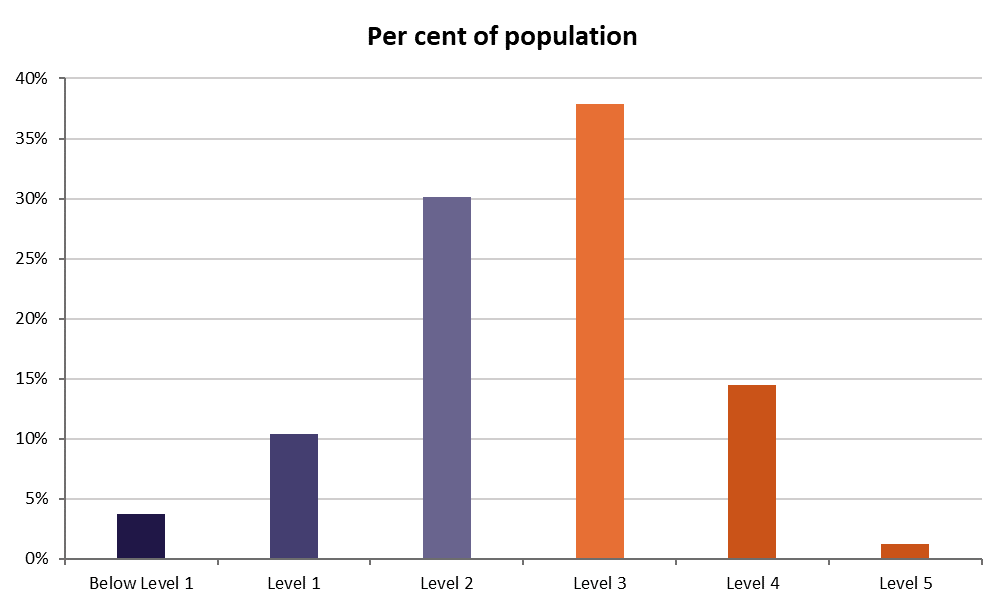Overall, literacy levels in Australia are above the international average. The following results summarise what is shown in the graph below, explaining the number of people who achieved each level of literacy:
- 3.7 per cent (620,000) are below Level 1 — a very low level of literacy
- 10 per cent (1.7 million) are at Level 1
- 30 per cent (5.0 million) are at Level 2
- 38 per cent (6.3 million) are at Level 3
- 14 per cent (2.4 million) are at Level 4
- 1.2 per cent (200,000) are at Level 5 — the highest level of literacy.

Source: Programme for the International Assessment of Adult Competencies (PIAAC)
What does PIAAC mean by literacy?
The PIAAC study defined literacy as the ability to understand, evaluate, use and engage with written texts to participate in society, achieve one’s goals, and develop one’s knowledge and potential.
Literacy encompasses a range of skills from the decoding of written words and sentences to the comprehension, interpretation, and evaluation of complex texts. It does not, however, involve the production of text (writing).
Information on the skills of adults with low levels of proficiency is provided by an assessment of reading components that covers text vocabulary, sentence comprehension and passage fluency.
What do the skill levels mean?
The levels increase in complexity and difficulty, so a Level 1 is very low, while a Level 5 is very high. The following is a summary of the skill levels as explained in the PIAAC study.
You can read the full explanations of the skill levels here.
Level 1
Most of the tasks at this level require the respondent to read relatively short digital or print continuous, non-continuous, or mixed texts to locate a single piece of information which is identical to, or synonymous with, the information given in the question or directive.
Level 2
At this level, the complexity of text increases. The medium of texts may be digital or printed, and texts may be comprised of continuous, non-continuous, or mixed types. Tasks in this level require respondents to make matches between the text and information, and may require paraphrasing or low-level inferences.
Level 3
Texts at this level are often dense or lengthy, including continuous, non-continuous, mixed, or multiple pages. Understanding text and rhetorical structures become more central to successfully completing tasks, especially in navigation of complex digital texts.
Level 4
Tasks at this level often require respondents to perform multiple-step operations to integrate, interpret, or synthesise information from complex or lengthy continuous, non-continuous, mixed, or multiple type texts. Complex inferences and application of background knowledge may be needed to perform successfully.
Level 5
At this level, tasks may require the respondent to search for and integrate information across multiple, dense texts; construct syntheses of similar and contrasting ideas or points of view; or evaluate evidenced based arguments. Application and evaluation of logical and conceptual models of ideas may be required to accomplish tasks.









